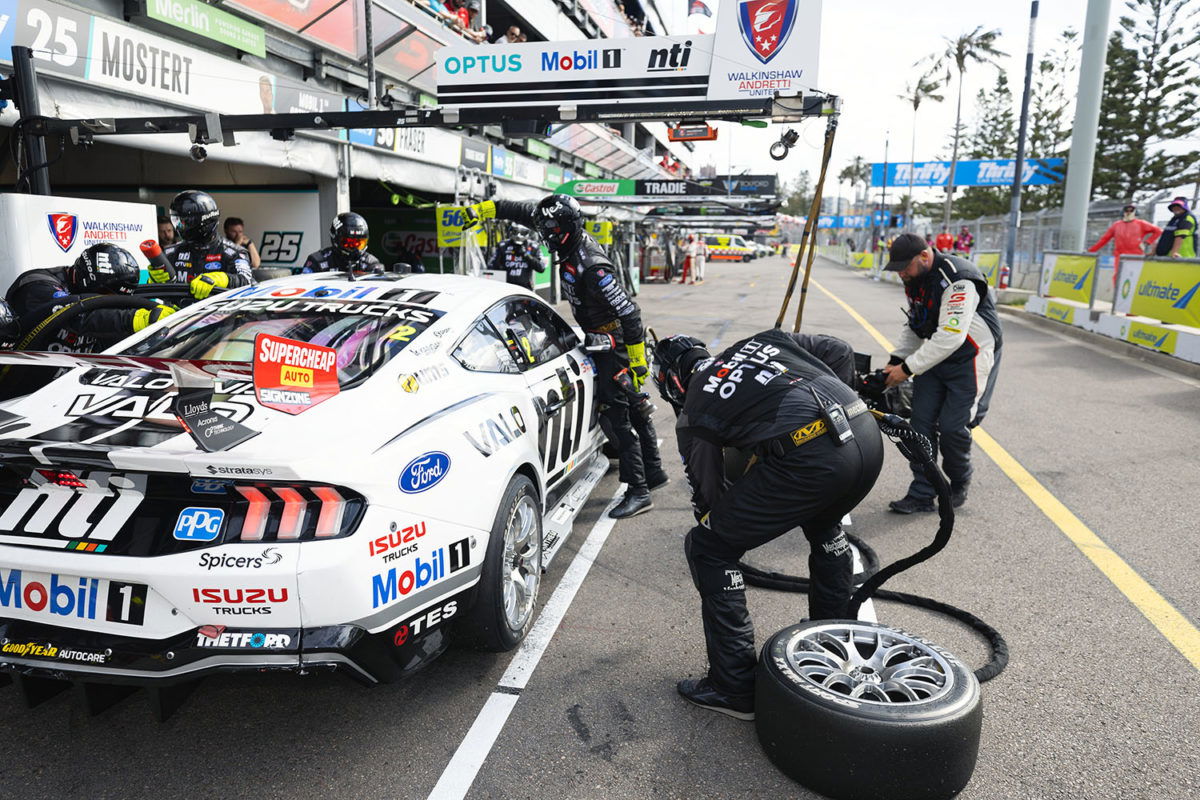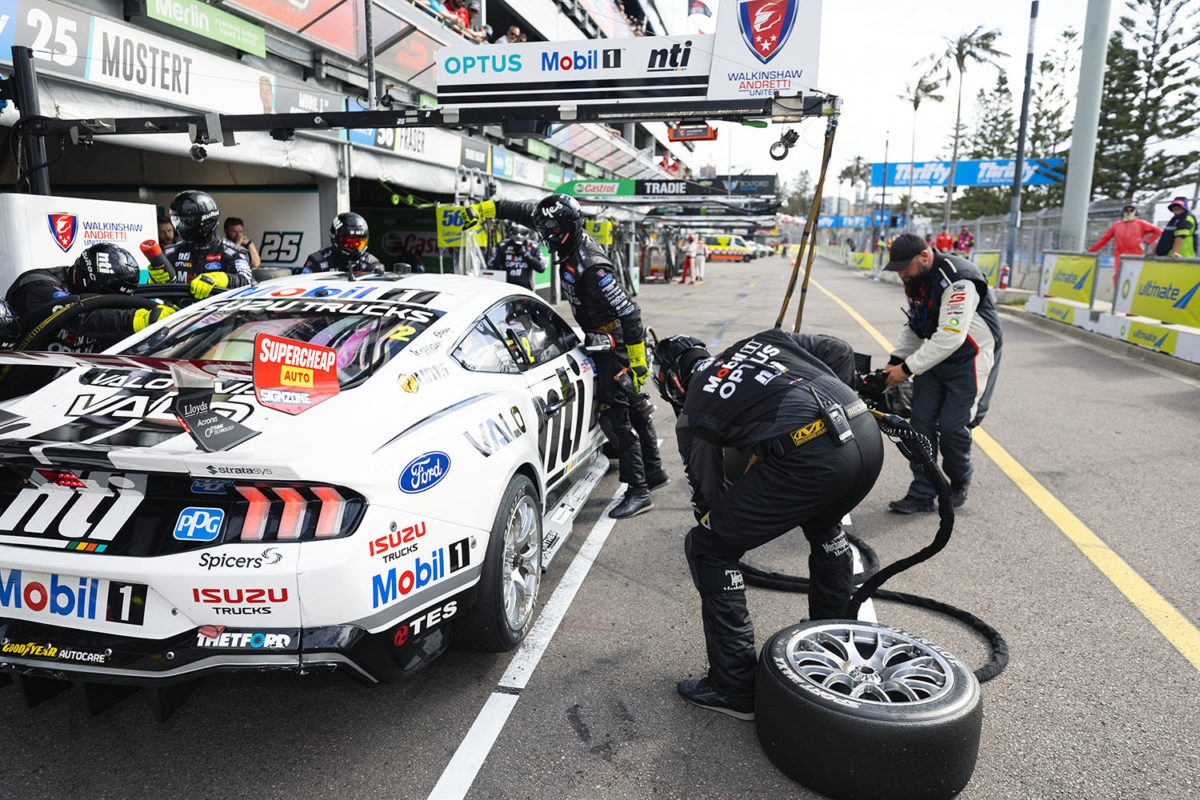

There are calls for patience on Supercars’ control tyres after drivers suggested they were a factor in the processional races which transpired in the debut of Gen3 in Newcastle.
The first event of the Gen3 era was highly anticipated given cars have had downforce slashed by more than 60 percent and boast engines which produce more torque than the old 5.0-litre units.
However, Race 1 was a particularly dreary affair, with just five on-track passes in the top 10 in 95 laps, and the only two lead changes (only one of which was an effective change) occurring during pit stop cycles.
Race 2 was more entertaining but is unlikely to be remembered as a classic, notwithstanding Shane van Gisbergen’s late-race pass for the lead of Chaz Mostert.
A reduction in downforce was supposed to make following easier and thus promote passing, but following contributes to tyres overheating, which drivers cited as an ongoing issue.
Despite the underwhelming start to Gen3, Jamie Whincup, the boss of Chevrolet homologation team Triple Eight Race Engineering, urged patience.
He pointed to the nature of the tight Newcastle East Street Circuit, where the soft compound of tyre was used for the first time, as well as the newness of the cars as reason to not jump to any conclusions about tyres just yet.
“I think we just hang fire, not make any big statements or go off on a goose chase,” Whincup told Speedcafe.com.
“I think we just need to get a few rounds under our belt and see what happens when we get to circuits that are much easier, more friendlier to pass on.
“You go to the Grand Prix [Albert Park] – high-speed corners, nice and wide – and we’ll see.
“Last year there wasn’t a huge amount of passing there because of the aero wash; maybe that’ll be different.
“I think we just need to give it a bit more time. We don’t want to change too much too soon. We’ll keep refining the cars and making them better.
“We all want better racing. No one’s got shares on follow-the-leader racing, so everyone – the teams, Supercars, drivers, you guys [media], fans – we all want better racing.
“If there’s a way we can do that, we certainly will, but I’m not sold that it’s changing the tyre, at this stage.”
Dunlop Operations Manager Kevin Fitzsimons had much the same take.
“At the end of the day, it’s a learning process for everybody and we’ve got to get some races under our belt and see what there is, and then we can work out if or what can be done about it,” he told Speedcafe.com.
“Heat’s a problem; they’re hot cars. It’s not just the tyres that are getting hot; it’s everything else as well, drivers included.
“It’s something we’ll look into. Adrian [Burgess, Supercars Head of Motorsport] will come back to me if he needs to have a chat and we’ll go from there.”
Fitzsimons also suspects the issue is somewhat circuit-specific, noting that the concrete walls which characterise street venues help trap the heat.
“Street circuits traditionally are pretty warm,” he added.
“It was hot here, the dead air around the walls and stuff like that, so we’ll have a look at what sort of feedback comes back from the Grand Prix, and places like Perth and Tassie that are quite open, and see what transpires there.
“It may be a street circuit thing here. Until we actually get some more info, it’s hard to judge it.”
Dunlop has already brought a softer wet tyre this year, given the Gen3 race cars not only have much less downforce but are also lighter than Car of the Future/Gen2 vehicles.
A brand-new specification of slick tyre, should it prove necessary, would take 18 months to develop, with testing required at multiple circuits.
The Albert Park Grand Prix Circuit, technically a street venue but effectively a permanent track, plays host to Supercars on March 30-April 2.




















Discussion about this post